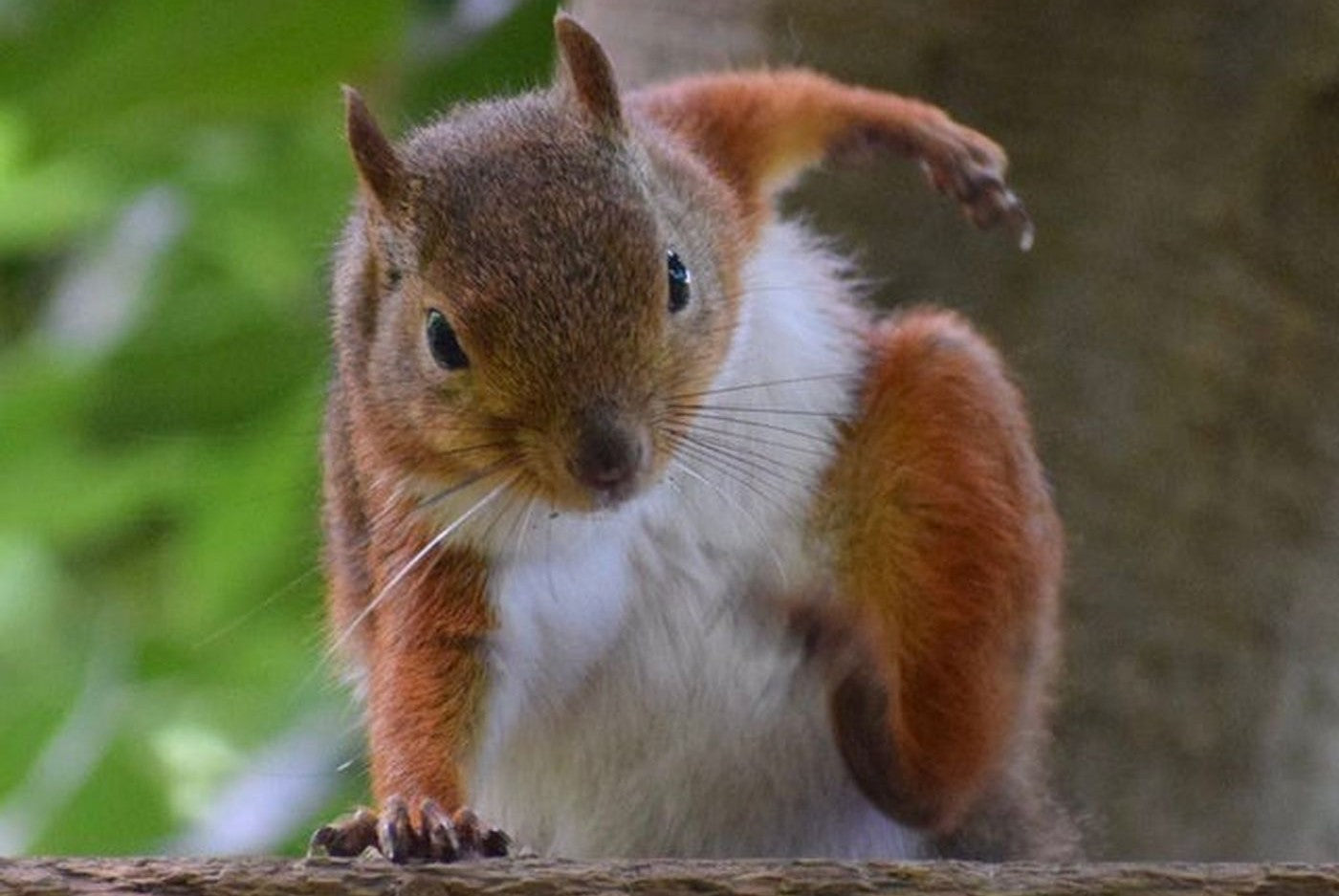Ratatoskr is a squirrel who carries messages along Yggdrasil, often between the wise eagle who sits at the top of the Tree of Life and the terrible dragon Nidhoggr, who lies coiled among the tree’s roots, forever chewing them. Ratatoskr relishes the chance to ferry insults between these two mighty beasts, and by doing so, he is continually stirring the animosity between them.

Ratatoskr is described as a red squirrel. In ancient artwork, he is depicted with extremely long ears and, in a 17th century Icelandic manuscript, even with a single horn on the middle of his head. This could be an affectation of the art style of the time, rather than a meaningful statement about Ratatoskr’s physique, as texts that describing him do not mention him having any features that set him apart from your typical bright-eyed and bushy-tailed red squirrel.

A 17th century Icelandic manuscript depicting Ratatoskr.
Ratatoskr is regarded as a troublemaker. He enjoys fueling spiteful relationships, and he may sometimes add his own embellishments to the messages sent between the eagle and the dragon Nidhoggr.
Some authors believe that Ratatoskr may have higher ambitions than just inflaming the fraught relationship between the eagle (which is unnamed but is described to have a hawk named Veðrfölnir seated between its eyes) and dragon Nidhoggr. In some interpretations, Ratatoskr is intent on destroying the Tree of Life. Because he lacks the strength to do much damage to the tree by himself, Ratatoskr manipulates the eagle and the dragon into attacking the tree, which stands between them and the opportunity to fight each other.
Ratatoskr usual behavior consists on telling Nidhoggr of a particularly vicious comment the eagle made about him, making the dragon gnaws even harder at at the roots of Yggdrasil, hoping to cause it to fall and crush the eagle. Unfazed, Ratatoskr scurries back to the eagle with the news that Nidhoggr is gnawing at the Worldtree, in an attempt to do him harm. The enraged eagle then begins to pluck branches from Yggdrasil to toss them down on Nidhoggr. With his well-placed accusations, Ratatoskr succeeds at doing great damage to the Tree of Life. Occasionally, the squirrel might even chip into the effort with his reputed “gnawing teeth.”

Ratatoskr is sometimes linked to Rati, a magical drill which Odin used on his quest to obtain magical Mead of Poetry. In short, Odin used the drill Rati to puncture a hole in a mountain which was the fortress of the giant who was holding the mead. Once the hole was made, Odin entered through it in the shape of a serpent, swallowed all the mead of wisdom, and turned into an eagle before exiting the mountain again. Still in the form of an eagle, Odin ascended to Asgard (located in the top branches of Yggdrasil) to share the mead with the other Gods (read more here).
The numerous parallels between Rati, in the tale of the stolen mead, and Ratatoskr, in descriptions of the tree of life, have caused many authors to believe that Ratatoskr symbolizes Rati. Both Ratatoskr and Rati are frequently described as “gnawing.” Both allow communion between an “underworld” and a higher place of wisdom, and both draw a connection between a snake-like creature and an eagle. Some authors even believe that the most direct translation of “Ratatoskr” is “Rati’s tooth.”

Ratatoskr appears in all three of the major literary reference points for Norse mythology: The Codex Regius, The Poetic Edda, and The Edda. These volumes span the thirteenth and fourteenth centuries and contain collections of anonymous poems and legends that predate the christianization of Norse culture.
In his book Teutonic Mythology, Jacob Grimm, one of the famous fairy-tale writing Brothers Grimm, puzzled over the deeper meaning of Ratatoskr’s role in Norse mythology. He concluded that Ratatoskr helped maintain balance in the Tree of Life. Yes, he caused tension and destruction, but that tension and destruction helped keep the tree straight and allowed it to sprout new growth.
In the art and entertainment of today, Ratatoskr is a popular character in the video-game Smite, also appearing in Marvel Comics as a super villain let loose by Loki to spread chaotic ideas and rumors on earth.

from Marvel comics
Sources
Simek, Rudolf. 2007 (1993). Translated by Angela Hall. Dictionary of Northern Mythology. D.S. Brewer. ISBN 0-85991-513-1
Orchard, Andy. 1997. Dictionary of Norse Myth and Legend. Cassell. ISBN 0-304-34520-2
Jesse Byock (2005) Snorri Sturluson, The Prose Edda. 1st. edition. London, England: Penguin Books Ltd. ISBN-13 978-0-140-44755-2
Faulkes, Anthony. Edda. Trans. 1982. Oxford University Press. ISBN-13: 9781389651922
Grimm, Jacob. Deutsche Mythologie. 2008. BiblioBazaar. ISBN-13 978-0554447285
Guerber, Hélène Adeline. 1895. Myths of the Northern Lands. American Book Company. ISBN 978-1-4400-9296-1














Comment (1)
Loved this article. Happy to learn more about this powerful archetype.